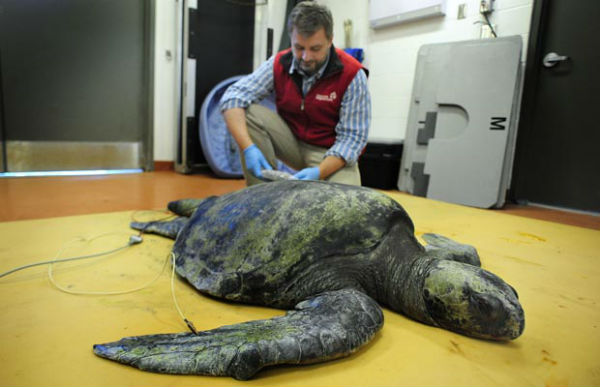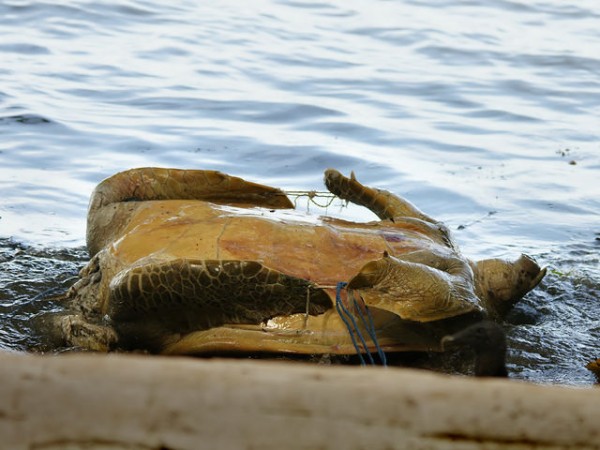Green sea turtles washed up on B.C. beaches
A very rare 150 million years old prehistoric giant green sea turtle appears for the third time in just two weeks on B.C. shores. It was spotted on Combers Beach in Pacific Rim National Park and was transported to a local aquarium in very bad condition.
The Province reports that this turtle died in Vancouver Aquarium today, Dec 12th. Scientists explain when turtles go to the beach its signals that something is wrong with them. The green turtle is listed as endangered by the IUCN and CITES and is protected from exploitation in most countries.

This is the sixth sea turtle sighting in B.C. this year: Two green, one olive ridley recently, and three leatherbacks in the spring and summer. All beached turtles died. The last beached green sea turtle also washed up on Combers Beach, on Nov. 30. The week before, on Nov. 22, the olive ridley was found along Wickaninnish Beach and was declared dead the next day.
There were no records of unusual currents that could have brought the turtles so far north, especially considering this year’s La Nina system which brings colder and drier conditions. Scientists suggested the turtles may have been stranded when the sea temperatures dropped rapidly at two points this fall because the cold water shuts down their bodies into what’s called a “cold stunned state,” causing them to drift and eventually wash ashore.

Maybe deep sea bed earthquakes, submarine volcanic eruptions, acidification of oceans or recent toxic pollution from Fukushima could be indirect reasons for recent events.
The Green sea turtle (Chelonia mydas), also known as the green turtle, black (sea) turtle, or Pacific green turtle, is a large sea turtle of the family Cheloniidae. Its range extends throughout tropical and subtropical seas around the world, with two distinct populations in the Atlantic and Pacific Oceans. The adults commonly inhabit shallow lagoons, feeding mostly on various species of seagrasses.

Like other sea turtles, they migrate long distances between feeding grounds and hatching beaches. Many islands worldwide are known as Turtle Island due to green sea turtles nesting on their beaches. Females crawl out on beaches, dig nests, and lay eggs during the night. Later, hatchlings emerge and walk into the water. Those that reach maturity may live to age 80 in the wild.
In some countries, turtles and their eggs are hunted for food. Pollution indirectly harms turtles at both population and individual scales. Many turtles die caught in fishing nets. Also, real estate development often causes habitat loss by eliminating nesting beaches. Foraging grounds are most likely along the coast of Baja California, Mexico, and southern California, in which these turtles have a high risk of incidental capture by coastal fisheries.
The only foraging area that has been identified is San Diego Bay, but it is heavily polluted with metals and PCBs. These contaminants have a negative effect on the ocean environment, and have been shown to cause lesions and sometimes mortality.
Featured image credit: TW

Could the cause be low frequency sonar from the US Navy? Sonar is used in the Northwest training range. The Navy is also testing depleted uranium underwater bombs.